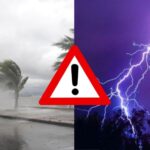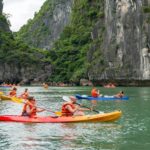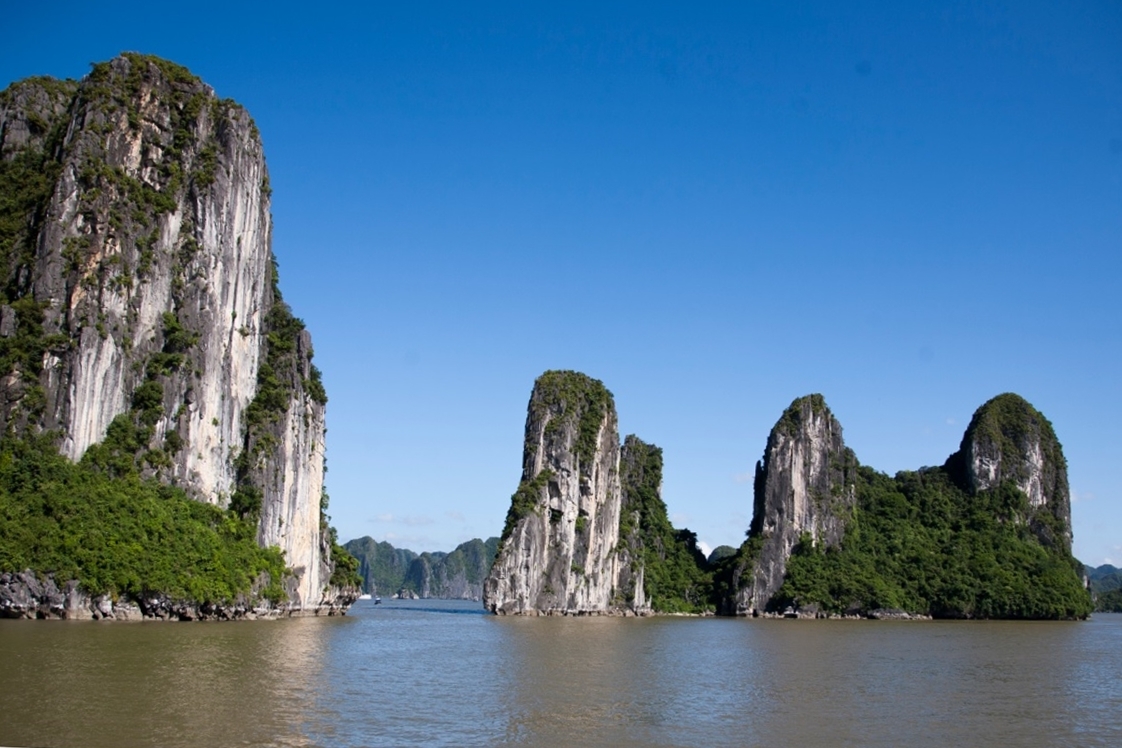
The lush greenery that once adorned the limestone mountains of Ha Long Bay now lies in ruins, leaving behind a stark contrast between the vibrant landscape captured in the first image and the desolate, brown vegetation that remains post-Typhoon Yagi (seen in the second image).
According to the Ha Long Bay Management Board, scientists have identified approximately 3,000 species of flora and fauna inhabiting the unique ecosystems of this limestone archipelago. However, the powerful Typhoon Yagi, with its intense winds of level 13, wreaked havoc on the region for several hours on September 7th, followed by prolonged rainfall that caused significant damage to the vegetation.
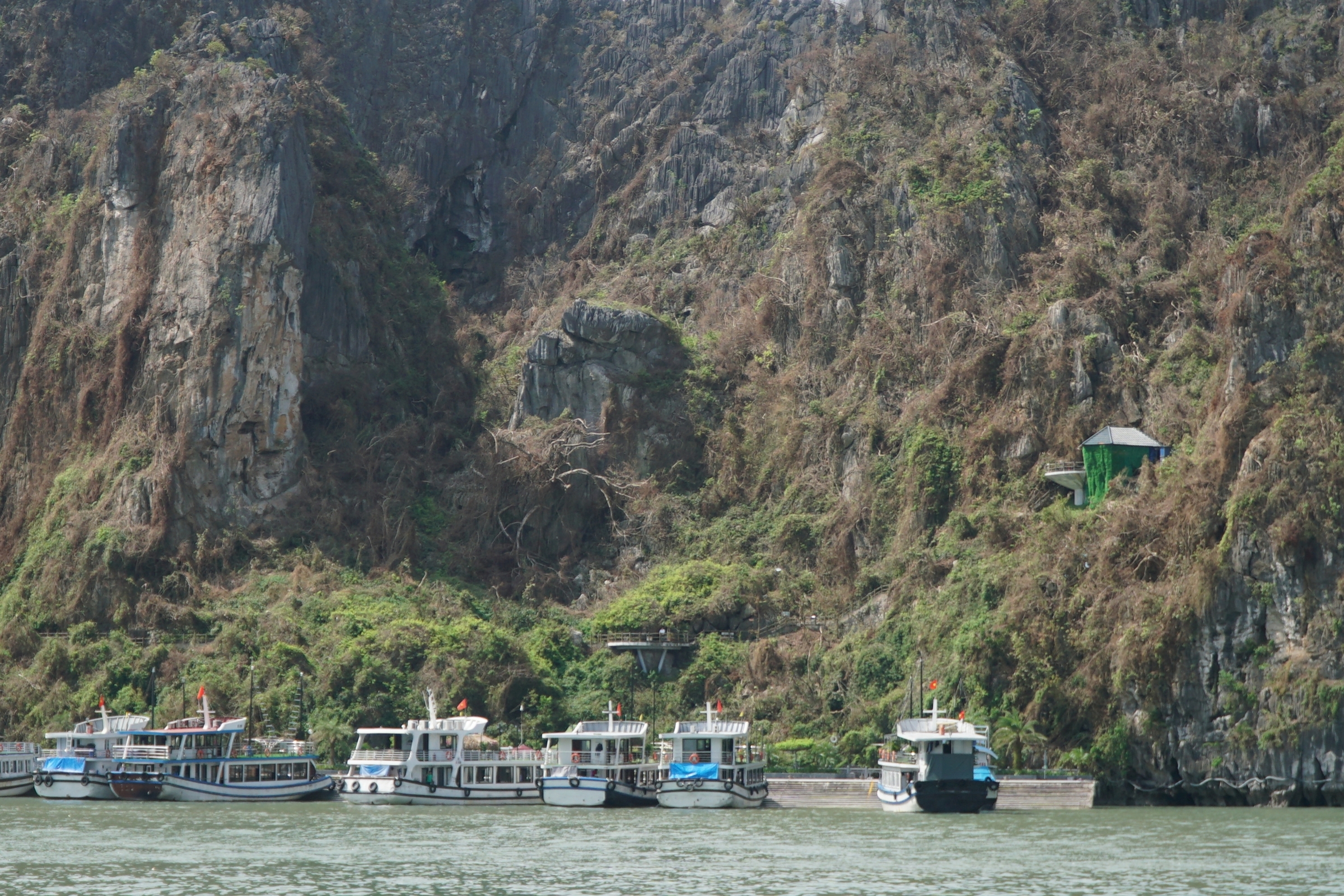

The once-lush foliage near the entrance of Thien Cung Cave on September 30th now lies wilted and barren, a stark contrast to its former vibrant state. The typhoon’s impact on the trees in the Thien Cung – Dau Go and Hang So – Ba Hang areas was significant, with 100% of the trees affected; 70% are expected to recover, while 30% have been irreparably damaged, either uprooted or snapped.
In the Vung Vieng area, 70-80% of the trees have shed their leaves or broken, with many snapped branches. Popular tourist spots like the Sung Sot Cave, Ti Top Island, Hang Co, Me Cung, and Soi Sim have also witnessed extensive damage, with many trees suffering broken tops and branches, although their recovery prospects remain high. Fortunately, the Tien Ong – Cua Van area remains largely untouched.
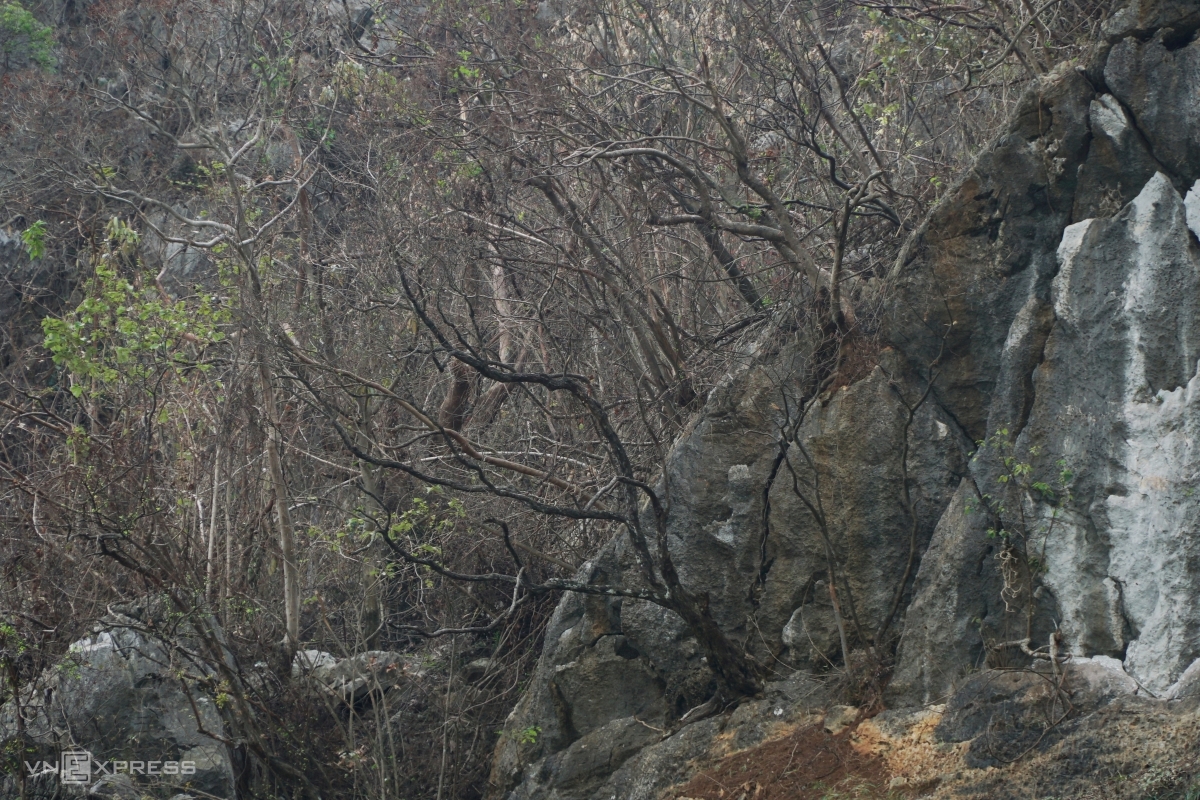
A section of the forest on the limestone mountain near Thien Cung Cave has dried up due to uprooting and root damage caused by the typhoon’s ferocious winds.
Scientists from the Institute of Ecology and Biological Resources warn that the reduction in vegetation cover on the limestone mountains will negatively impact the region’s unique flora and fauna and the habitat of its wild animals.
Additionally, the dry leaves and tree trunks on the islands increase the risk of wildfires as the dry season approaches.
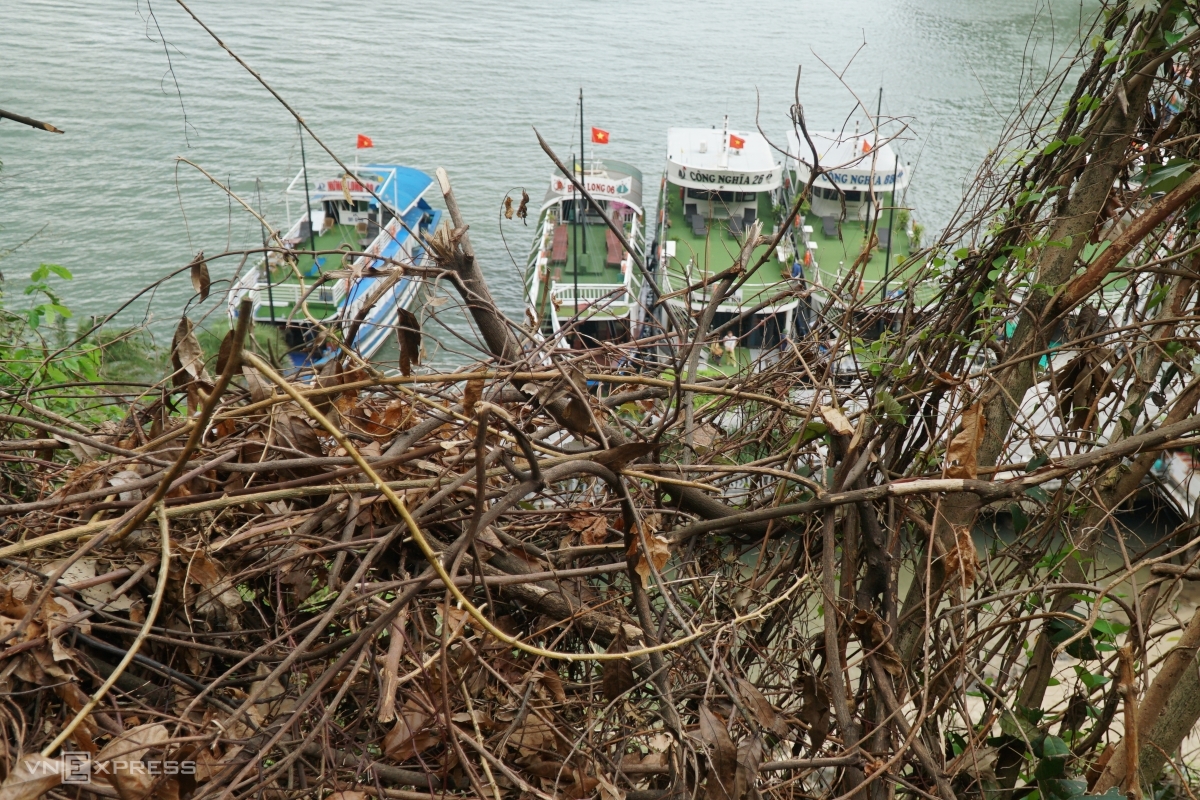
The extent of tree damage, including uprooting, branch breakage, and leaf shedding, varies depending on the wind exposure of different areas.
The Ha Long Bay Management Board has invited experts from the Institute of Ecology and Biological Resources (under the Vietnam Academy of Science and Technology) to assess the post-typhoon situation and provide advice on sustainable conservation strategies for the bay.
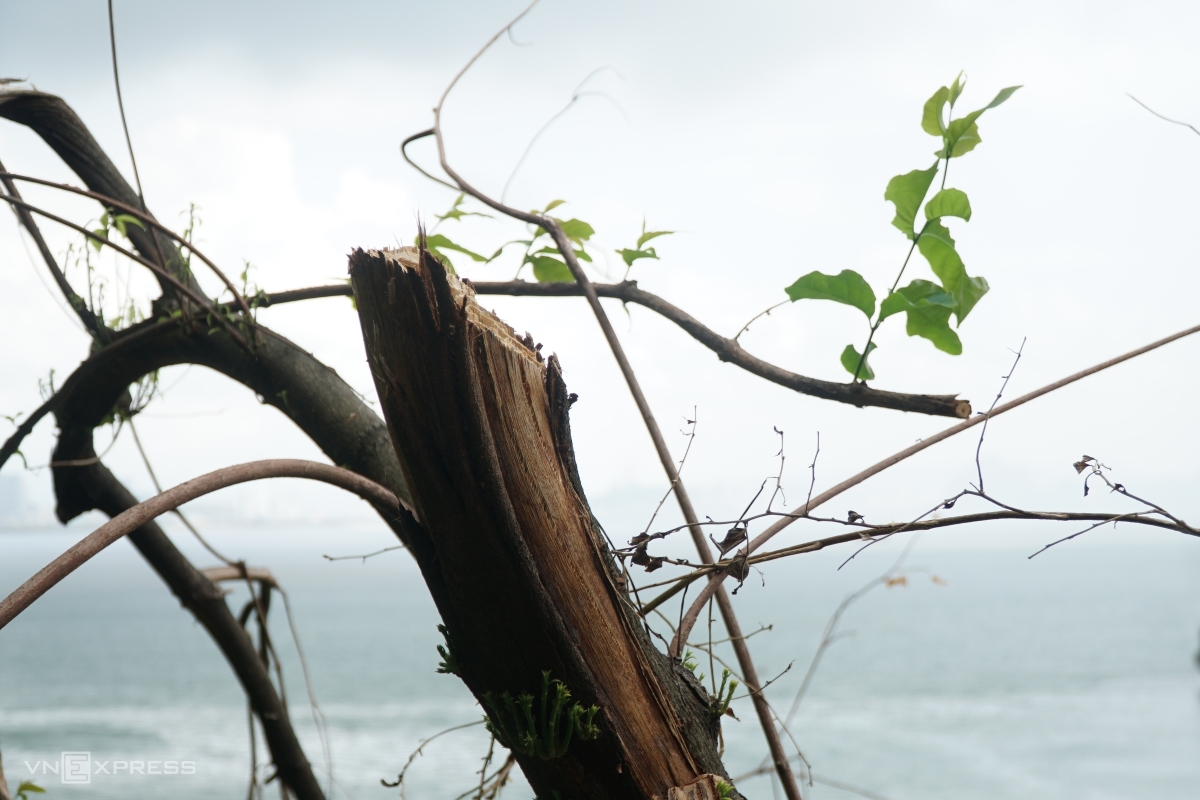
Nature’s resilience is evident three weeks after the typhoon, with new sprouts and leaves emerging. However, a full recovery is expected to take between four and six months.
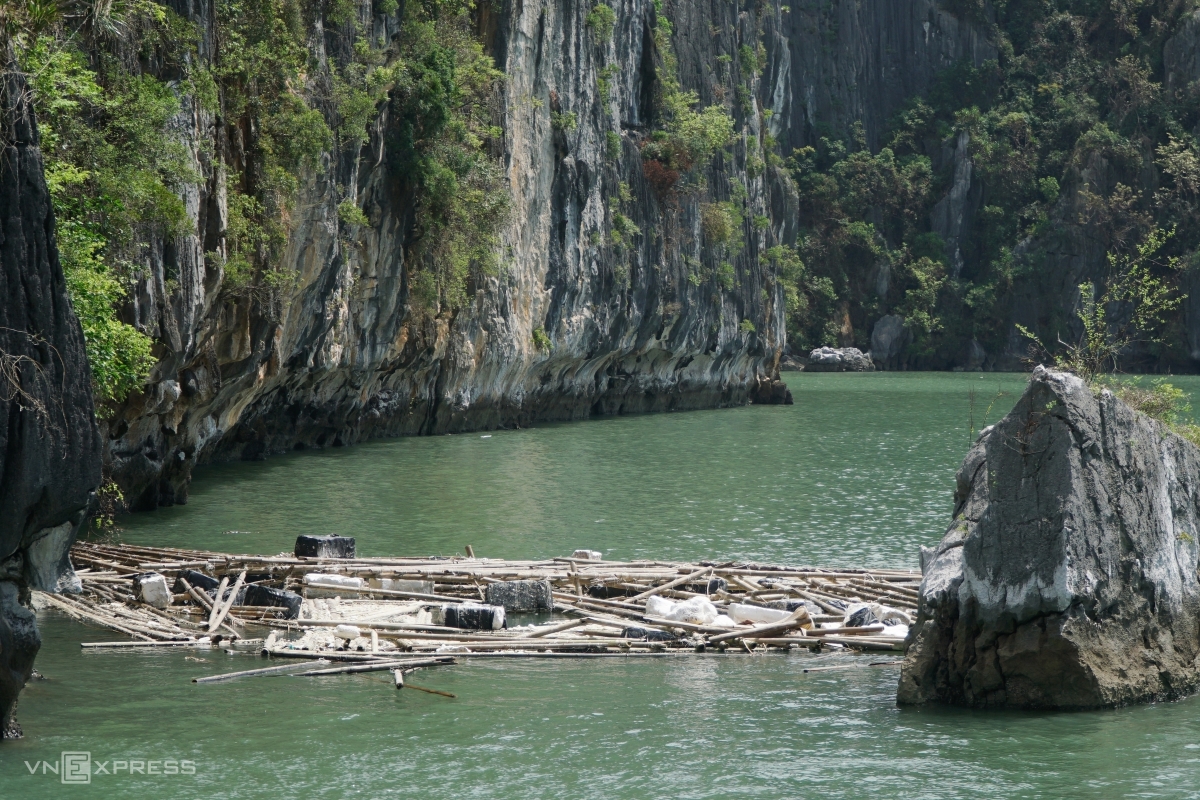
In addition to the devastation of the vegetation, the typhoon’s aftermath has also resulted in a significant amount of marine debris in the bay, primarily from destroyed fish farming cages, foam floats, rafts, bamboo and wood fragments, and equipment from damaged onshore facilities.
To address this issue, the Ha Long city administration has deployed approximately 150 people and 50 water vehicles daily to clean up and transport the debris, focusing on the core heritage area of Ha Long Bay, tourist routes, and then the entire bay, including the sea surface, island shores, and beaches.

Remnants of destroyed fish cages from Typhoon Yagi still float near Tuan Chau Island, awaiting cleanup.
Mr. Vu Kien Cuong, Head of the Ha Long Bay Management Board, assured that the cleanup campaign would continue throughout October and beyond until the bay is entirely free of debris. Currently, the focus is on collecting debris from the island’s shores, sandy areas, and the Tuan Chau Island shoreline.
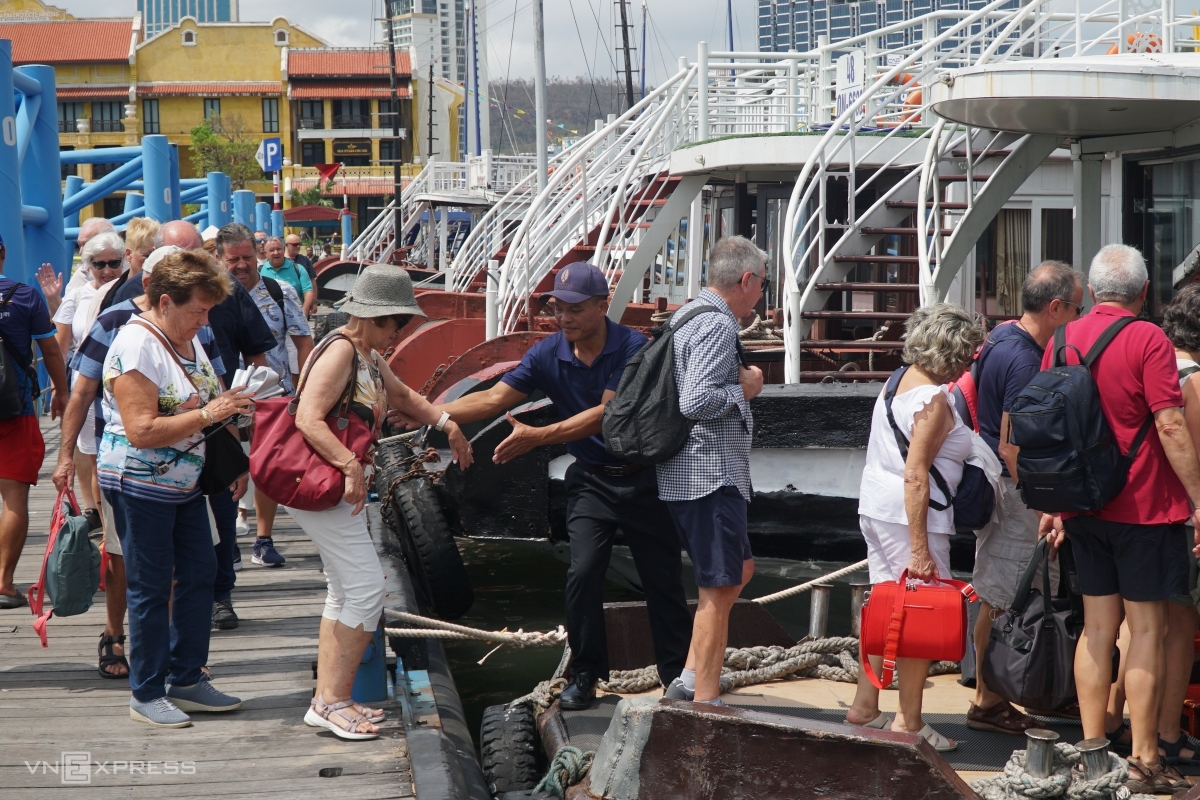
Even before its full recovery, Ha Long Bay reopened its doors to visitors on September 13th. In the ten days following the typhoon, the bay received approximately 30,000 visitors, with nearly 90% being foreign tourists.
The image above depicts a group of Spanish tourists embarking on a cruise around the bay on the morning of September 30th.
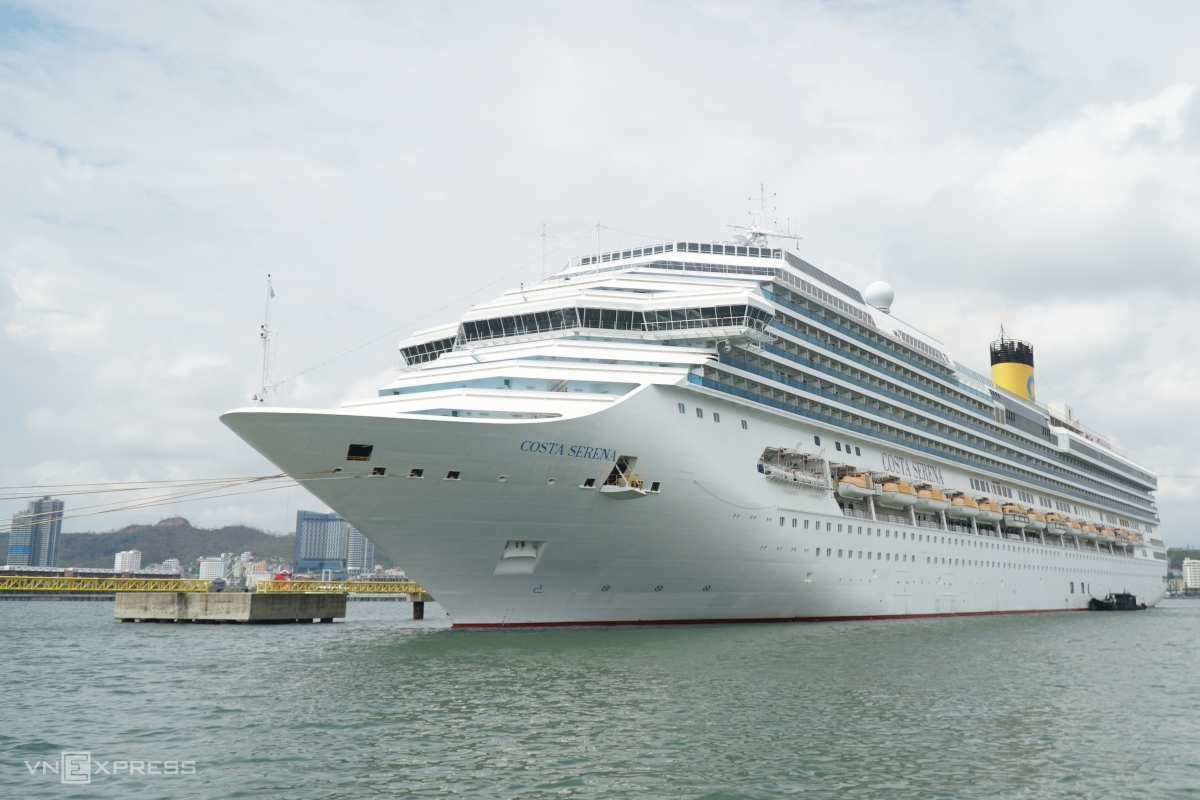
A cruise ship from Hong Kong arrives at the Ha Long International Passenger Port on September 30th, marking the first ship to visit the bay post-typhoon and kicking off the 2024-2025 cruise season. The passengers disembarked and explored the bay and other local attractions in smaller groups.
From now until the end of the year, Ha Long Bay is expected to welcome 16 large cruise ships from renowned global corporations and brands, bringing thousands of tourists from Europe, America, and China to this UNESCO World Heritage Site.
The Truc Lam Zen House: A “Miniature Ha Long Bay” in An Giang
The Truc Lam An Giang Meditation Institute is a spiritual tourist destination that attracts a multitude of visitors with its picturesque scenery and romantic landscape. Nestled in the Seven Mountains region, it boasts a breathtaking vista akin to a miniature Ha Long Bay, offering a serene and enchanting experience for all who visit.
The Gulf of Tonkin, Cat Ba Archipelago: A Recognized International Geological Heritage Site
The stunning Ha Long Bay in Quang Ninh Province and Cat Ba Archipelago in Hai Phong City have been recognized as international geological heritage sites by the International Union of Geological Sciences (IUGS). Alongside 99 other locations across 53 countries, these Vietnamese gems now hold this prestigious distinction.
Kayaking Through the Majestic Tràng An Mountains: An Unforgettable Adventure
Kayaking in Trang An is an exceptional tourism service and a unique experience not to be missed. Discover the beauty of this UNESCO World Heritage Site as you paddle through breathtaking landscapes. Explore the mysterious caves, float past towering limestone karsts, and immerse yourself in the tranquil beauty of Trang An. Get ready to be captivated by this unforgettable adventure!

























